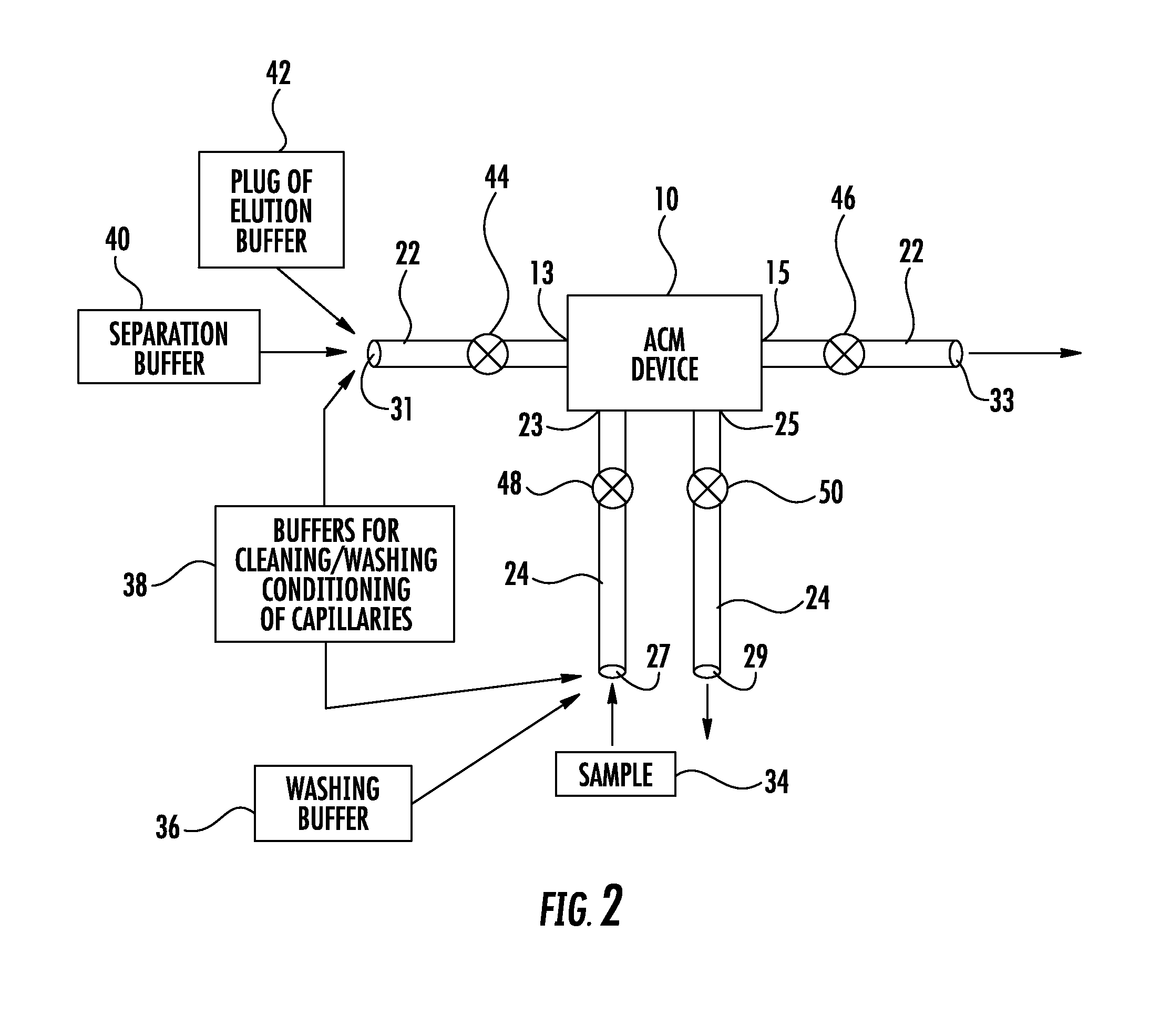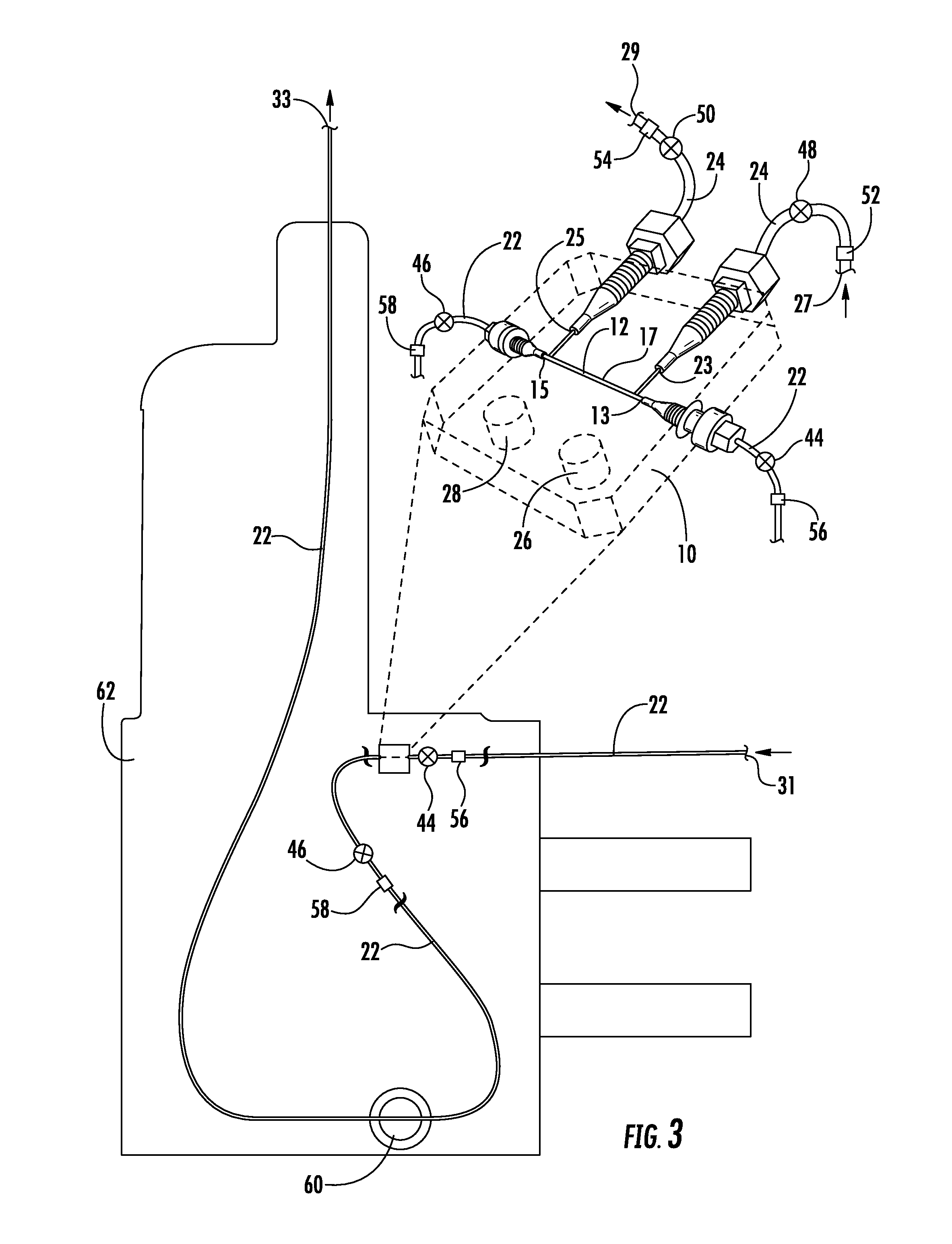Integrated modular unit including an analyte concentrator microreactor device connected to a cartridge-cassette
a microreactor and analyte technology, applied in the field of chemical, biological, cellular materials or structures analysis, to achieve the effects of small sample volume, fast, simple, and large sample volum
- Summary
- Abstract
- Description
- Claims
- Application Information
AI Technical Summary
Benefits of technology
Problems solved by technology
Method used
Image
Examples
Embodiment Construction
[0042]Reference will now be made in greater detail to a preferred embodiment of the invention, an example of which is illustrated in the accompanying drawings. Wherever possible, the same reference numerals will be used throughout the drawings and the description to refer to the same or like parts.
[0043]FIG. 1 illustrates modular, portable and interchangeable analyte concentrator-microreactor (ACM) device 10 of the present invention, containing one or more immobilized affinity ligand groups, that can be mounted directly onto a cartridge-cassette unit of a capillary electrophoresis apparatus, or a similar cartridge-cassette or support unit of a gas-chromatography apparatus, a liquid-chromatography apparatus, another analytical separation apparatus, including microfluidic devices, or to a combined apparatus containing functional features of all analytical separation instrumentation. Apertures 26 and 28 in analyte concentrator-microreactor (ACM) device 10 can be used for mounting of an...
PUM
| Property | Measurement | Unit |
|---|---|---|
| volume | aaaaa | aaaaa |
| concentration | aaaaa | aaaaa |
| mechanical pressure | aaaaa | aaaaa |
Abstract
Description
Claims
Application Information
 Login to View More
Login to View More - R&D
- Intellectual Property
- Life Sciences
- Materials
- Tech Scout
- Unparalleled Data Quality
- Higher Quality Content
- 60% Fewer Hallucinations
Browse by: Latest US Patents, China's latest patents, Technical Efficacy Thesaurus, Application Domain, Technology Topic, Popular Technical Reports.
© 2025 PatSnap. All rights reserved.Legal|Privacy policy|Modern Slavery Act Transparency Statement|Sitemap|About US| Contact US: help@patsnap.com



